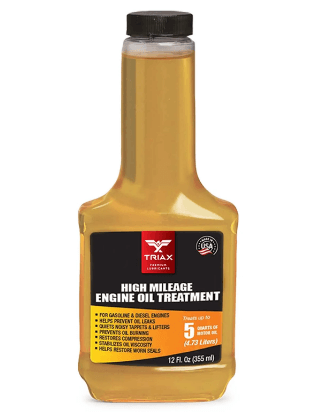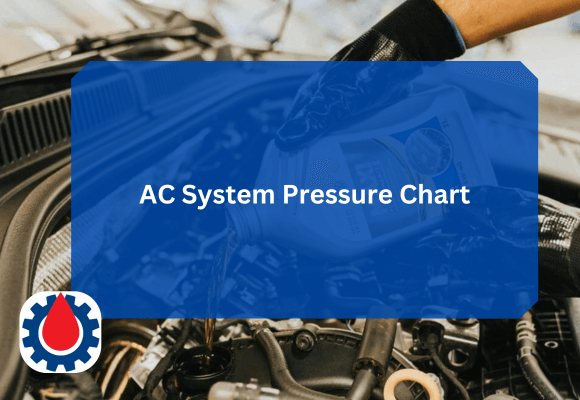When it comes to maintaining vehicle engines, the use of additives can make a significant difference. Many drivers and enthusiasts often wonder if combining different types of engine treatment products, such as engine restorers and specialized oil additives, can optimize performance or lead to complications.
One common question is whether you can use an engine restorer with a Triax oil additive at the same time. Let’s dive into the details to provide a clear answer.


Can I Use Engine Restorer and Triax Oil Additive Together
The compatibility of different engine treatments is a common concern. Here’s what to consider when using an engine restorer and Triax oil additive simultaneously:
1. Chemical Compatibility
Most high-quality oil additives are formulated to work independently. However, combining products requires understanding their chemical makeup.
Engine restorers often have ingredients that bond with metal surfaces, while Triax oil additives primarily focus on improving lubrication and preventing oxidation. In most cases, these two products don’t interact negatively. However, it’s crucial to consult the product labels or manufacturers for any warnings or limitations.
2. Performance Redundancy
Both products offer unique advantages. An engine restorer focuses on compression and sealing, whereas Triax oil additives boost lubrication and heat protection. Combining them may create overlapping benefits, which isn’t inherently harmful. In fact, it can lead to improved overall engine health.
3. Potential Side Effects
While there are benefits to using multiple additives, there’s a risk of overloading your oil with too many treatments. Excessive additive content can alter the viscosity of the oil, potentially leading to decreased performance or unintended mechanical issues. This is rare but worth considering.
Read Molybdenum in Engine Oil(Science Behind Molybdenum in Oil)
Best Practices for Using Engine Additives Together
If you decide to use both an engine restorer and a Triax oil additive, follow these guidelines to maximize effectiveness and minimize risks:
- Read the product instructions carefully: Each product will have usage directions that outline how and when to add them to your oil.
- Dosage matters: Pay attention to the recommended dosage for each additive. Using too much of either product can dilute the effectiveness of the oil.
- Monitor your engine’s response: After adding the products, keep an eye on the engine’s performance. Look for signs like smoother operation, reduced noise, or changes in oil consumption.
Step-by-Step Guide to Adding Both Additives
- Change Your Oil: It’s often best to start with fresh oil when adding new treatments. Drain the old oil, replace the oil filter, and add new engine oil as per your vehicle manufacturer’s recommendation.
- Add the Engine Restorer: Pour the engine restorer into the oil filler cap according to the dosage specified on the product’s label.
- Add the Triax Oil Additive: Introduce the Triax additive to the engine. Ensure that the total volume of additives does not exceed what is safe for your engine capacity.
- Run the Engine: Start your vehicle and let it idle for a few minutes. This helps distribute the additives throughout the engine.
- Drive and Monitor: Take the car for a short drive and observe its behavior. Note any improvements or issues, such as engine noise reduction or changes in temperature levels.
Read Racing Engine Oil Viscosity(Learn the Viscosity Formula for Success)
Signs That Your Engine Is Responding Well
After introducing both an engine restorer and a Triax oil additive, positive signs that indicate your engine is benefiting from the combination include:
- Quieter Operation: Reduced clatter or tapping sounds are often signs of improved lubrication.
- Better Acceleration: Enhanced compression and lubrication can lead to smoother, more powerful acceleration.
- Lower Oil Consumption: If you previously experienced high oil consumption, a reduction may indicate that the engine restorer is effectively sealing the gaps.
Engine Restorers and Their Purpose
Engine restorers, often marketed as revitalizing products, serve a very specific purpose. Their main goal is to improve engine compression, reduce oil consumption, and extend the lifespan of engine components.
They typically contain advanced chemicals that fill microscopic scratches and gaps within the cylinder walls, enhancing the seal between the piston rings and the cylinder. This results in:
- Improved compression: Ensuring more efficient combustion and, consequently, better power and performance.
- Reduced oil burning: Minimizing the amount of oil that escapes past the piston rings, thus maintaining proper oil levels.
- Prolonged engine life: Protecting against further wear and tear.
Read Engine Oil Capacity Chart(Guide Model A to Z)
What Is Triax Oil Additive and What Does It Do?
Triax oil additives are well-regarded products in the automotive industry, designed to improve the overall properties of engine oil. These additives can enhance lubrication, reduce friction, and provide advanced protection against heat and oxidation. The benefits of using Triax oil additives include:
- Enhanced lubrication: The formulation allows for smoother movement of engine parts, leading to less wear.
- Improved heat management: Reduces engine temperatures, protecting components from overheating.
- Antioxidant properties: Prevents the formation of sludge and deposits, keeping the engine clean.
The Benefits of Using Additives in General
Before we get into the specifics of using these two products together, it’s helpful to understand the broader benefits of using oil and engine additives:
- Prolonged engine life: By minimizing friction and wear, additives can significantly extend the functional lifespan of an engine.
- Improved fuel efficiency: Less friction means less energy loss, which can translate to better fuel economy.
- Noise reduction: Many additives can quiet engine noise by smoothing out metal-on-metal interactions.
- Corrosion protection: Additives can shield engine components from moisture and rust, essential for vehicle longevity.
Read Car Engine Oil Color Chart(Color That Signals Immediate Danger)
Potential Risks and How to Mitigate Them
While combining additives is usually safe if done correctly, potential risks include:
- Oil Viscosity Changes: Adding too many products can alter the viscosity of your engine oil, affecting how well it flows and lubricates under different temperatures.
- Chemical Reactions: Although uncommon, some combinations may cause reactions that could reduce the effectiveness of the additives or the oil.
To avoid these issues:
- Stick to recommended dosages: Never exceed the specified amounts on the product labels.
- Consult your mechanic: If you’re unsure whether your specific engine can handle both products, getting professional advice is wise.
- Trial runs: Consider testing the additives one at a time before combining them to understand their individual impact.
Expert Opinions and Recommendations
Many automotive experts agree that using a high-quality engine restorer and a reputable oil additive like Triax together can be beneficial, provided the correct approach is followed.
Experts often emphasize that the most important factor is understanding what your engine needs. If you’re experiencing compression loss and oil thinning simultaneously, combining these two products could be the right strategy.
However, if your vehicle is already performing well without additives or if you have a newer engine, the added cost and effort might not yield significant benefits. Always weigh the necessity against the potential advantages.
Read Can You Mix Different Weights of Oil(Hack or a Disaster)
FAQs
Can I use an engine restorer and Triax oil additive on an older vehicle?
Yes, older vehicles with higher mileage can particularly benefit from the combination as they often suffer from reduced compression and increased friction.
Are there any compatibility issues between different brands of oil additives?
Compatibility depends on the chemical composition of the additives. While most are designed to work with standard oils, check the product guidelines to avoid adverse reactions.
How frequently should I use these additives?
Engine restorers are typically used with every oil change, while oil additives like Triax can be added more frequently if needed. Refer to each product’s instructions for details.
Will using these products void my vehicle warranty?
In some cases, using aftermarket additives can affect warranties. It’s advisable to check with your vehicle manufacturer before use.
Can these additives improve my fuel economy?
Yes, by reducing friction and improving compression, these additives can contribute to better fuel efficiency.
Read Will an Oil Change Increase Gas Mileage(Experts Agree on This)
Final word
Using an engine restorer and a Triax oil additive together can provide multiple benefits, such as enhanced engine performance, reduced noise, and better protection. While most drivers can safely combine these products, careful adherence to guidelines and monitoring of engine behavior are essential to ensuring success.




